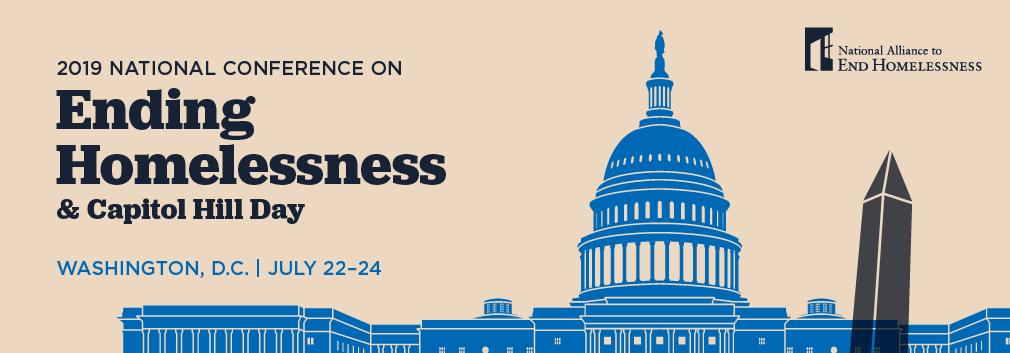Each year, the Alliance’s staff – like so many of you – leaves the National Conference on Ending Homelessness and Capitol Hill Day ready to renew our commitment to our mission. As we reflect on everything we heard, here are the major takeaways from the conference:
Affordable Housing
Affordable housing is always an issue, but there is now greater urgency than ever: people with low incomes in every state are struggling to access safe, affordable places to live, and this has a direct impact on inflow into homelessness. Now that policymakers and elected officials are starting to prioritize the issue, it’s time to advocate for the resources we need, and get strategic about the resources we have.
Housing First
Housing First works – and people working in this field know it and are steadfastly committed to it. There are threats to Housing First coming from the administration, and we pledge to work as hard as we can to oppose them. In the meantime, the data and outcomes speak for themselves. Keep doing what we know works, and the results will follow.
Lowering Barriers
Many conversations at the conference focused on low-barrier shelter, and how to create systems that are truly accessible to all. This is a challenge for many communities, but we can see the results when everyone commits to identifying and eliminating the barriers that exist in our systems. This is not just a matter of practice, but a culture that is key to achieving the goals that we all share: to rapidly exit people from homelessness into housing, and to connect people with the services they need.
Racial Equity
Achieving racial equity requires awareness of the impacts of racism not only on systems that leave people homeless, but on every facet of programming within the homelessness system. This is challenging work, but it is essential in order to reach our goals. There are good tools to help, but none of it can happen unless we are open to difficult conversations and changing the way things are done. Achieving racial equity is a critical part of ending homelessness.
Collaboration with Partners
The homelessness system cannot afford to work in a vacuum. So many of the problems we are facing now – such as aging populations and rising levels of unsheltered homelessness – are not solely homeless problems, but also public health problems. We need to be aware of the stake that others have in solutions to homelessness: regional and agency partners like local governments, emergency management response, and health care systems. Homelessness programs have know-how that these partners need, while they have resources that can help take solutions to scale. Partnering with these systems takes persistence and resilience, but it is an essential strategy.
Use Your Data
Data is your friend. If you know how to track and use data, it will allow you to allocate your resources in the smartest ways possible. New tools like HUD’s Stella can allow you to assess your program and maximize how you use your funds based on your system data.
Your Advocacy is Critical
It is time to hold elected officials accountable. It’s their job to solve systemic social problems, and we need your advocacy to remind them of this. Taking action – whether at a large event like Capitol Hill Day, virtually through our Take Action page, in person at an in-district visit, or via phone call – is immensely important so that that the programs we rely on are appropriately funded.
To every single one of you who attended, or who followed along at home, we thank you for your work to end homelessness.
To explore more themes discussed at the conference, explore the #NAEH2019 hashtag on Twitter, follow the Alliance at @naehomelessness, and watch the plenaries from each day of the conference on Facebook.

